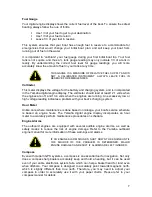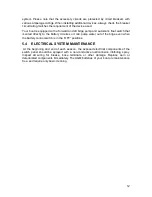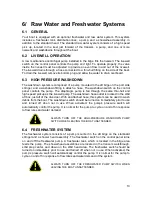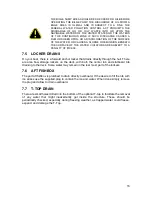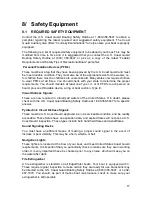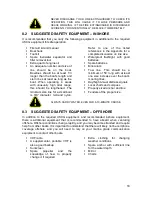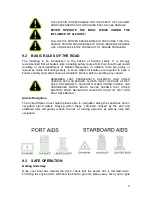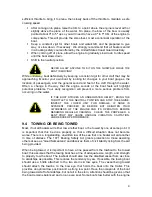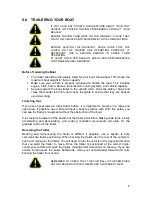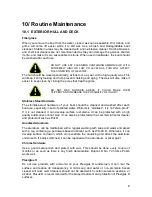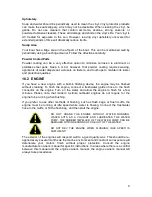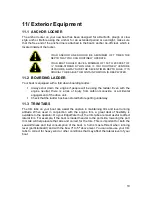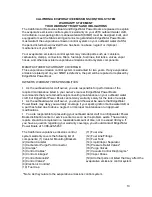
3
THE CAPTAIN IS RESPONSIBLE FOR THE SAFETY OF THE CREW
AND PASSENGERS AND F
OR HIS/HER BOAT’S WAKE DAMAGE
NEVER OPERATE THE BOAT WHILE UNDER THE
INFLUENCE OF ALCOHOL!
FOLLOW THE PROPER ENGINE BREAK IN PROCUDES. THIS WILL
ASSURE PROPER ENGINE BREAK IN WHICH INCREASES ENGINE
LIFE, AND REDUCES THE POSSIBILITY OF ENGINE PROBLEMS.
9.2 BASIC RULES OF THE ROAD
The following is an introduction to the basics of boating safety. It is strongly
recommended that all boaters take a boating safety course from their local Coast Guard
Auxiliary or local department of Natural Resources. In addition there are plenty of
resources online for boating safety. In some states all boaters are required to have a
boater’s safety card, also known as a boater’s license, before operating any vessel.
REMEMBER THAT PADDLEBOATS, SAILBOATS AND OTHER
VESSELS SUCH AS BARGES, ALWAYS HAVE THE RIGHT OF WAY
OVER POWERBOATS. SAILBOATS, WHEN UNDER POWER, ARE
CONSIDERED MOTOR BOATS. NEVER ASSUME THAT OTHER
BOATERS KNOW NAVIGATION RULES OR RIGHT OF WAY, AND
BOAT DEFENSIVELY.
Aids to Navigation
The United States Coast Guard places aids to navigation along the coastlines and in
navigable inland waters. Staying within these “channels” marked by the port and
starboard aids will greatly reduce the risk of running aground, as well as help with
navigation.
9.3 SAFE OPERATION
Getting Underway
Once your boat has cleared the dock, check that the power trim is trimmed down.
Trimming the engine down will allow the boat to get onto plane easily. Give your engine
Summary of Contents for 262CX
Page 1: ...262CX ...
Page 5: ...ii ...


